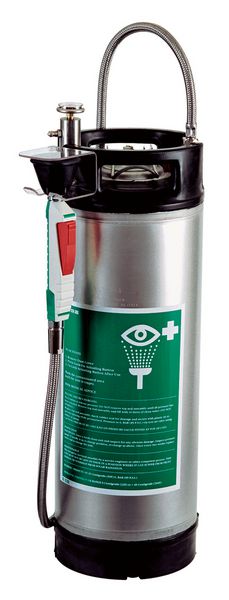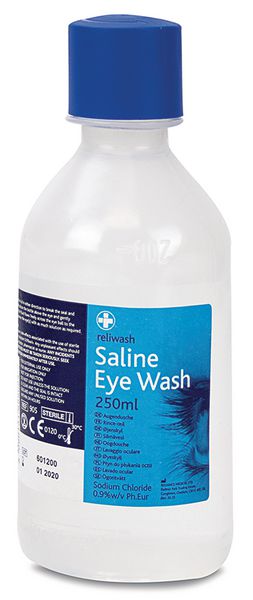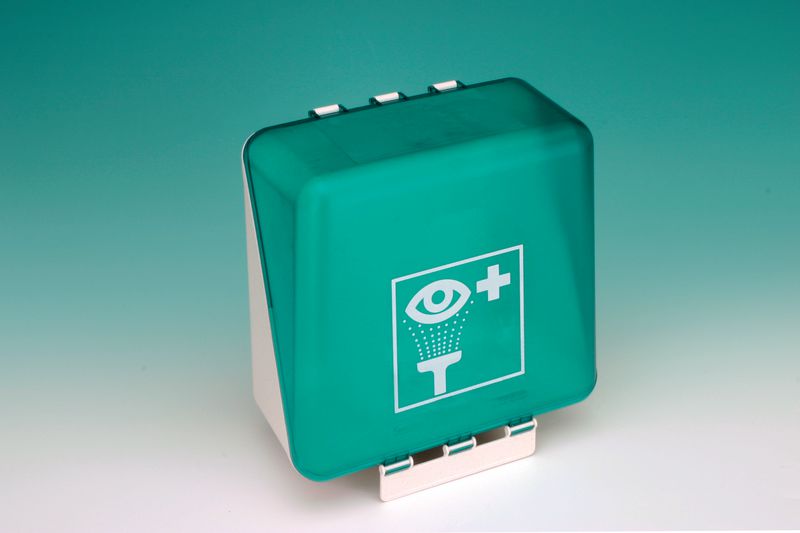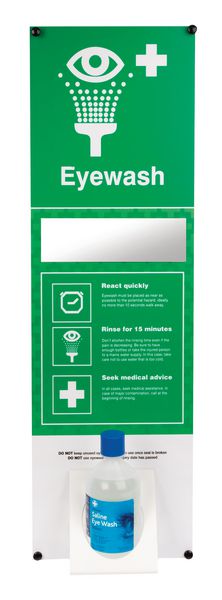-
Promotion

Hughes Emergency Combination Showers
From £999.00 To £1,508.49
From £999.00 To £1,464.00
Supplied in: Single -

Premier Eye Wash Station
£39.99Supplied in: Single -

Outdoor Emergency Safety Shower
£3,089.99Supplied in: Single -
Promotion

Wall-Mounted Emergency Safety Showers
From £320.00 To £468.19
From £320.00 To £454.50
Supplied in: Single -

Portable Eye Wash Cabinet
£24.99Supplied in: Single -

Double Eye Wash Kit
£24.99Supplied in: Single -

Saline Eye Wash Pods
£8.55Supplied in: Pack of 25 -

Saline Eye Wash
From £2.70 To £4.35Supplied in: Single -

Hughes Portable Emergency Eye, Face & Body Wash
£699.99Supplied in: Single -
Promotion

Emergency Eyebath/Facewash Fountains
From £449.99 To £688.29
From £437.40 To £668.20
Supplied in: Single -
Promotion

Hughes Single Safety Showers - Quick Cold Cleanse
From £519.29 To £1,248.39
From £504.00 To £1,211.99
Supplied in: Single -

Saline Eye Wash - Pack of 10
£27.92Supplied in: Pack of 10 -

Complete Eye Care Station
£17.50Supplied in: Single -
Promotion

Hughes Safety Shower Accessories
From £25.95 To £289.89
From £25.95 To £281.00
Supplied in: Single -

Emergency Eye Wash Station
£18.81Supplied in: Single -

Plum Saline Eye Wash Solution
From £9.59 To £45.59Supplied in: Single -

Redcap™ Chemical Splash Station
£54.99Supplied in: Single -

Eye Wash Kit Refill
£8.58Supplied in: Single -

Triple Eye Wash Kit
£25.02Supplied in: Single -

Eye Wash Bottle Storage Box (Empty)
£37.79Supplied in: Single -

Plum Saline Eye Wash Station with Mirror
From £43.59 To £74.99Supplied in: Single -

Hughes Wall-Mounted Eyebath/Facewash
£503.49Supplied in: Single kit -

Seton Deluxe Chemical Splash Kit
£29.99Supplied in: Single kit -

Eye Wash Pod Kit
£15.68Supplied in: Single -

Combined First Aid Kit & Eye Wash Stations
£118.49Supplied in: Single -

Plum pH-Neutral Eye Wash Solution - Single Ergo Cup
£12.92Supplied in: Single -

Single Bottle Eye Wash Stations
From £35.96 To £36.71Supplied in: Single -

Redcap™ Eye Wash & Skin Flush
£10.69Supplied in: Single -

Plum Duo Saline Eye Wash Refills
From £20.39 To £32.49Supplied in: Single -

Plum Duo pH-Neutral Solution
£28.49Supplied in: Single -

Industrial Quicksafe Wall Box
£146.89Supplied in: Single -

Quicksafe Wall Case for the Chemical Industry
£141.89Supplied in: Single -

Eye Wash, Sign and Poster Bundles
From £30.89 To £50.14Supplied in: Single kit -

Modular Eye Wash Mini Stations
From £51.99 To £55.69Supplied in: Single -

Combined First Aid & Eye Wash Stations - Unstocked
From £92.69 To £100.59Supplied in: Single -

Photoluminescent Double Eye Wash Station
£34.37Supplied in: Single kit -

Plum Duo Saline Eye Wash Station
£85.29Supplied in: Single -

Eye Wash Awareness Sign and Poster Kits
From £38.59 To £61.79Supplied in: Single kit -

QuickRinse Mini Refill
£25.99Supplied in: Single -

Plum Eye Wash Belt Bag
£9.59Supplied in: Single -

Safety Shower Awareness Sign and Poster Kits
From £56.69 To £74.59Supplied in: Single kit
Eye Wash & Emergency Showers
Need help?
 Which eye wash equipment is vital for your business?
UK Number 1 Eye Wash and Emergency Showers with Fast Delivery
Which eye wash equipment is vital for your business?
UK Number 1 Eye Wash and Emergency Showers with Fast Delivery
Emergency showers and eye wash facilities can make a world of difference in treating exposure to dangerous chemicals. It is said the first 10 seconds following an incident, involving hazardous substances, is critical to prevent complications; including disability or even death.
At Seton, our range of eye wash supplies and emergency showers ensure we have a suitable solution for you. Protect your team from physical injury or damage to their eyesight, following splashes or sprays of substances, on your premises. Not sure what you need? Take a look at our expert advice, further down this page, for in-depth guidance.

Expert Information
Also discover:
First Aid SuppliesBurns TreatmentFirst Aid KitsFirst Aid Room EquipmentFirst aid training equipmentSafety Showers
Expert Advice: Eye Wash & Emergency Showers
It is an employer’s duty under The Health and Safety at Work Act to conduct a risk assessment which considers these factors and to then implement appropriate measures. Before thinking about treating potential victims though, it is a good idea to consider what can be done to prevent accidents in the first place. If you are thinking about an office environment you may wish to also consult our guide to first aid in the office.
Our protective equipment range can help to reduce the need for eye wash supplies and safety showers. Coveralls are chemical resistant along with goggles and glasses to prevent eye splashes. You should also consider the safe storage and handling of chemicals and other potentially dangerous substances and you will find a wealth of information and relevant products in our COSHH area.
The employer also has a responsibility under the 1981 Health and Safety First Aid Regulations to provide “adequate and appropriate” facilities for implementing first aid, ensuring employees have knowledge of the equipment as well as its location. To assist this we can provide a range of signage related to first aid eye wash and showers. HSE also provides guidance for specific circumstances which includes the following:
- Small burns and scalds should be treated by flushing the affected area with plenty of clean cool water
- For chemical burns, flush affected parts of the body with plenty of clean, cool water ensuring that all the chemical is so diluted as to be rendered harmless
- Foreign bodies in the eye must be irrigated with clean, cool water if the object cannot be removed
- Chemicals in eyes should be treated by flushing the open eye with clean, cool water for at least 5 to 10 minutes or even longer if there is any doubt.
Equipment Recommended by the HSE:
1) Safety showersSafety showers are designed to flush the user's skin as quickly as possible. They should not be used on eyes because the high rate or pressure of water flow could damage the eyes in some instances. Safety showers are provided to wash off hazardous chemicals that may be splashed on the skin. Large volumes of water should be used to wash away contaminants and it may be necessary to remove contaminated clothing. Safety showers can also be used effectively in extinguishing clothing fires or for flushing contaminants off clothing.
2) Eye baths and eye fountain units
Eye baths and eye fountain are handy and potentially sight saving facilities which give employees a quick way of rinsing out eyes in the event of contamination. They are designed to flush the eyes and face area only. Eye wash units can be mounted on walls, pedestals or work surfaces depending on the type of hazard or working environment.
Most showers and eye wash units can be supplied with a wide range of optional fittings to make them easier to use and to alert co-workers and first aiders. These include local and remote alarms, lighting and a choice of devices to activate the shower such as pull rods, panic bars and foot plates.
Emergency safety showers and eye wash units are either supplied alone or as a combination unit. Limited space may deem separate units are the preferred option. However, combination showers and cover all potential accidents.
3) Eye wash bottles and pods
According to HSE guidance, if mains tap water is not readily available for eye irrigation, at least one litre of sterile water or sterile normal saline (0.9% w/v) in sealed, disposable containers should be provided. Our Saline Eye Wash Pods are a convenient portable solution and here you’ll find specialist products such as duo bottles allowing both eyes to be rinsed at once as well as neutral pH solutions.
FAQ's
Where should emergency shower/eye wash facilities be located?
Emergency safety showers can be floor standing, or where space is restricted, mounted on walls or ceiling. They should be located in an obvious location, easy to see and get to. Anyone trying to get to the station within 10 seconds and should not be impeded by obstacles.Should saline eye wash solutions or pH neutral eye wash solutions be used?
Saline eye wash solutions act as a substitute when water is not available. They are used to remove foreign objects such as dirt and dust from the eye. Saline solution can also be used for chemicals which are not highly acidic or alkaline (between 4 and 10 on the pH scale). Any chemical with a pH value above 9 or below 4 has the potential to burn the cornea, and this is when it’s a good idea to use a pH neutralising solution. Both types work by irrigating the eye to remove the chemical and there’s no risk if you use a pH neutralising solution for a non acid or alkaline chemical.What do current health and safety regulations say about eye injury?
The Health and Safety approved code of practice has specific guidelines regarding eye injury first aid. Employees exposed to loose foreign bodies in the eye should be able to immediately wash the eye out with clean, cool water. In the event of chemical exposure, the eye should be washed out continuously for 10 to 15 minutes with clean, cool water.As already mentioned, there are occasions when saline solutions or pH-neutralising solutions can be used. Further guidelines on eye wash bottles and containers state that sterile water or saline solution should be available in sealed disposable containers holding at least 300 ml each, and these should not be reused once the sterile seal is broken. The guidelines stress that reusable eyebaths, eye cups and other refillable containers should never be used for eye irrigation. After immediate on-site treatment, any employee with an eye injury should be sent to hospital, with the eye covered with a sterile eye pad.
What do current health and safety regulations say about chemical burns?
The HSE approved code of practice states that all burns and scalds should be flushed with plenty of clean cool water, and that in the case of chemical burns, affected areas should be flushed with clean, cool water for 10 to 15 minutes. While it is important to remove any contaminated clothing if possible, clothing sticking to damaged skin should not be removed. After decontamination using the emergency shower, any exposed or damaged skin should then be dressed with a suitable sterile dressing, and the injured person should be sent to hospital.What training and information do we need to give employees regarding eye injury and chemical burns?
It is vital that employees working with hazardous chemicals understand the risks, use the correct safety equipment, take extensive preventative measures to avoid contact with chemicals and know how to deal with potential burns and eye injuries.Appendix 3 of the HSE First Aid At Work Health and Safety Regulations lays out details of the number of personnel trained in first aid that are needed per number of employees, depending on the level of hazard in your particular workplace.
How important are eye wash and emergency shower facilities?
The importance of protecting employees from eye injury and chemical burns cannot be stressed enough. Accidents can always happen, even if your safety at work record is impeccable, your staff are highly trained and you have every necessary preventative measure in place to avoid injury or contamination.Add to this the fact that UK health and safety legislation is, of course, carefully enforced, with heavy fines and even prison sentences possible for breach of regulations. Also keep in mind that this could potentially be the tip of the iceberg from a financial liability point of view. The Bhopal disaster in India resulted in the parent company, Union Carbide, being sued for millions of dollars due to their substandard safety equipment, which led to many other large international companies reviewing their own safety standards in facilities.
To ensure employee safety throughout your workplace we recommend you consider some of our top products when it comes to eye wash stations and emergency showers:
- Premier Eye Wash Station – Includes eye wash bottles and pods, eye dressings, clear instructions for use and integral mirror to aid self-administration.
- Portable Eye Wash Cabinet – Fully portable, with secure catches and carry handle, and a rubber seal which makes it suitable for damp or dirty work areas.
- Hughes Emergency Combination Showers – Supplied in sections for easy assembly on site. Different models include safety shower with eyebath, or safety shower with both eyebath and body spray.

